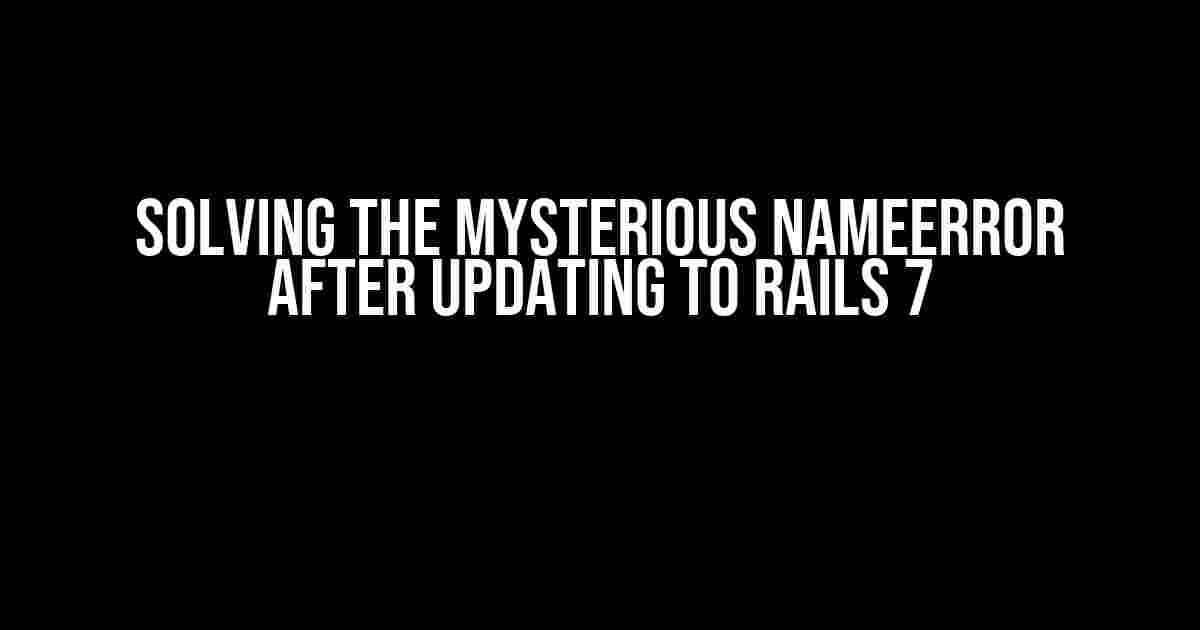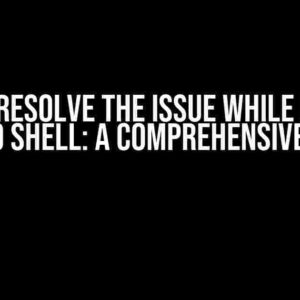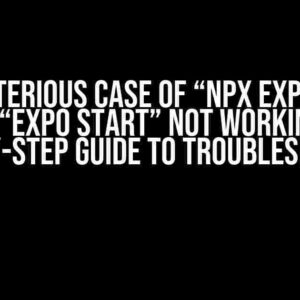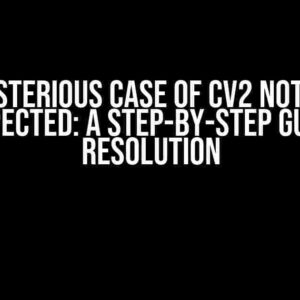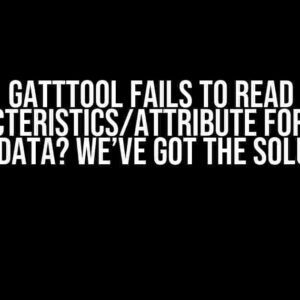Ah, the thrill of updating to the latest version of Rails! The excitement of exploring new features, the promise of improved performance, and the… wait, what’s this? A NameError?!
The Problem: NameError after Updating to Rails 7
You’ve updated to Rails 7, and suddenly, your application is throwing a NameError left and right. You’ve tried restarting the server, clearing the cache, and even sacrificing a few lines of code to the coding gods, but nothing seems to work. Fear not, dear developer, for you’re not alone in this struggle.
The NameError is a pesky error that occurs when Ruby can’t find a constant or a method that’s being referenced in your code. In the context of Rails 7, this error often pops up due to changes in the way Rails handles autoloading and eager loading.
Why Does This Happen?
Rails 7 introduced a new approach to autoloading, which aims to improve performance and reduce memory usage. Unfortunately, this change can sometimes cause existing code to break, resulting in the dreaded NameError.
There are a few reasons why you might be experiencing this error:
- Autoloading issues: Rails 7 has changed the way autoloading works, which can lead to constants not being loaded correctly.
- Eager loading conflicts: If you have multiple files with the same name in different directories, Rails might get confused and throw a NameError.
- Invalid or outdated configuration: Your Rails configuration might be outdated or incorrect, causing the application to misbehave.
Solving the NameError: Step-by-Step Guide
Fear not, dear developer! Solving the NameError is a relatively straightforward process. Follow these steps to get your application back on track:
- Stop and restart your Rails server: Sometimes, a simple restart can resolve the issue. Stop your Rails server using
Ctrl + Cand restart it usingrails s. - Check your Rails configuration: Ensure that your
config/initializers/inflections.rbfile is correctly configured. You can do this by runningrails r "puts Rails.application.config.inflections"in your Rails console. This will output the current inflection settings. - Verify autoloading: Check if autoloading is correctly configured by running
rails c "puts ActiveSupport::Dependencies.autoload_paths"in your Rails console. This will output the currently autoloaded paths. - Check for naming conflicts: If you have multiple files with the same name in different directories, try renaming one of them to resolve the conflict.
- Update your Gemfile: Ensure that your Gemfile is up-to-date and includes the correct versions of the required gems. Run
bundle updateto update your Gemfile. - Clear the cache: Clear your cache by running
rails c "Rails.cache.clear"in your Rails console. This will remove any cached values that might be causing issues. - Check for circular dependencies: If you have models or controllers with circular dependencies, try refactoring them to avoid the conflict.
- Revert to a previous version of Rails (optional): If none of the above steps work, you can try reverting to a previous version of Rails. This should be a last resort, as it might break other parts of your application.
Bonus Tips and Tricks
In addition to the above steps, here are some bonus tips to help you avoid NameErrors in the future:
- Use meaningful names: Avoid using generic names like “controller” or “model” for your classes. Instead, use descriptive names that reflect their purpose.
- Use namespaces: Organize your code using namespaces to avoid naming conflicts.
- Keep your code organized: Keep your code organized and follow best practices to avoid issues with autoloading and eager loading.
- Test your code regularly: Regularly test your code to catch any errors or issues before they become major problems.
Conclusion
Solving the NameError after updating to Rails 7 requires patience, persistence, and a willingness to dig deep into the inner workings of your application. By following the steps outlined above, you should be able to identify and resolve the root cause of the error. Remember to stay vigilant, keep your code organized, and test regularly to avoid future issues.
# example code snippet
module MyModule
class MyClass
def my_method
# some code here
end
end
end
| Solution | Description |
|---|---|
| Stop and restart your Rails server | Restart your Rails server to ensure that all changes take effect |
| Check your Rails configuration | Verify that your Rails configuration is correct and up-to-date |
| Verify autoloading | Ensure that autoloading is correctly configured and functioning as expected |
| Check for naming conflicts | Resolve any naming conflicts by renaming files or classes |
| Update your Gemfile | Ensure that your Gemfile is up-to-date and includes the correct versions of required gems |
| Clear your cache to remove any cached values that might be causing issues |
By following these steps and staying vigilant, you’ll be able to solve the NameError and get your application back on track. Happy coding!
Here are 5 questions and answers about “NameError after updating to Rails 7” in HTML format with a creative voice and tone:
Frequently Asked Question
Got stuck with a NameError after upgrading to Rails 7? Don’t worry, we’ve got you covered!
What’s causing the NameError in Rails 7?
The NameError in Rails 7 is often caused by the removal of autoloading, which was a default feature in previous Rails versions. This means that you need to explicitly require or autoload your classes and modules.
How do I fix the NameError for a model?
To fix the NameError for a model, make sure to require the model file in the application.rb file. For example, if you have a model called ‘User’, add the following line: `require ‘user’`. Alternatively, you can use the `autoload_paths` configuration in your application.rb file to autoload the model.
What about NameError for a controller?
For a controller, you need to make sure that the controller file is properly named and located in the correct directory. For example, if you have a controller called ‘UsersController’, the file should be named ‘users_controller.rb’ and located in the ‘app/controllers’ directory.
Can I use a gem to fix the NameError?
Yes, there are gems available that can help you fix the NameError in Rails 7. One popular gem is ‘rails_autoload’, which provides a similar autoloading functionality to previous Rails versions. However, it’s recommended to use this gem as a temporary solution and refactor your code to use explicit requires or autoloads instead.
What’s the best practice for avoiding NameError in Rails 7?
The best practice for avoiding NameError in Rails 7 is to use explicit requires or autoloads for your classes and modules. This ensures that your code is properly loaded and avoids any naming conflicts. Additionally, it’s a good idea to organize your code in a logical structure and follow the Rails conventions for naming and placement of files.

